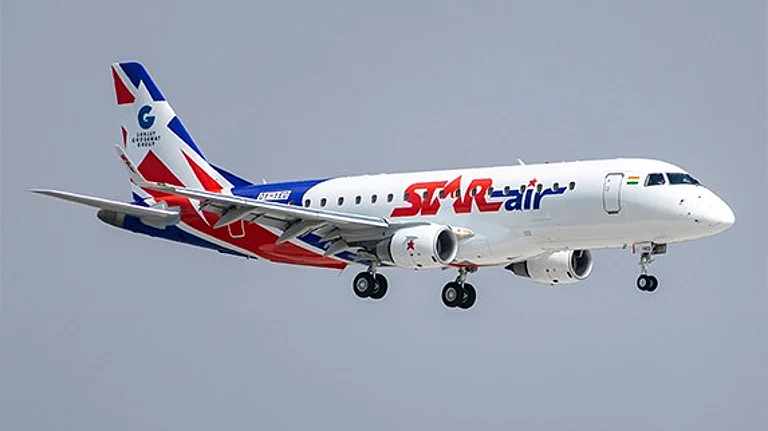Lok Sabha approved the Protection of Interests in Aircraft Objects Bill on April 3. The bill introduced in the upper house of the Parliament by the Union Civil Aviation Minister Kinjarapu Ram Mohan Naidu seeks to streamline aircraft leasing in the country and provide a legal backing to the Cape Town Convention and Protocol of 2001, to which India is a signatory.
“The bill will boost the Indian leasing industry, incentivise domestic lessors, and strengthen our banking system,” said the aviation minister in a post on X.
Why is the bill important?
The minister said that the bill is the “need of the hour” as nearly 85% of the aircraft used by the Indian airlines are leased from foreign lessors. According to a PwC report published in 2021, nearly 80% of India’s total commercial aircraft are leased.
Since the lessors, banks who finance the high-value aircraft, and airlines are all in different countries, it creates a problem for lessors to repossess the aircraft, especially in case of default on payments or when an airline goes bankrupt. Such issues have come to light in the case of Kingfisher Airlines, Jet Airways and Go First (formerly GoAir). Debt-ridden airline Go First defaulted on payments worth Rs 2,600 crore to several aircraft lessors. Adding to the woes, the National Company Law Tribunal (NCLT) ruling prohibited them from retaking their planes for nearly four months.
Presently, if an airline defaults on payment, the legal route that the lessors can take is going to the NCLT, the case often stretches for long as there is no fixed timeline and results in the aircraft being grounded for an uncertain timeframe. This has discouraged the lessors and financiers from pinning their hopes on the world’s third largest civil aviation market.
The Aircraft Objects bill aims to fill this domestic legal lacuna. It provides a legal framework to deal with such issues in a time-bound manner and offers security to creditors. In case of defaults, it gives the lessors the right to take back possession of the aircraft within two months or a mutually agreed-upon period, whichever is earlier.
“There were a number of instances like the case of SpiceJet, Kingfisher where conflicts were found and led to a lot of pressure being applied by the international community and the domestic airlines market to bring in a legal regime in place, which gives the financiers and lessors some sort of safety and security,” Managing Partner at Sarin & Co., Nitin Sarin, told Outlook Business.
Another key change that the bill will bring is on the finance side of the business. Civil aviation is a capital-intensive sector and requires heavy investments. Indian banks and financial companies have held themselves back from providing loans to airlines, as in case of default, they don’t have the right to repossess the aircraft. The provision mentioned in the SARFAESI Act specifically excludes the creation of any security in an aircraft. Such prohibitions are not applicable to international financial institutions. The bill will put domestic financial institutions on the same footing as the international.
“This new bill will apply to all the parties equally and they can repossess the asset within 60 days,” said Sarin.
What is Cape Town Convention?
The operations of airlines are unique when compared to other modes of transportation, as their functioning extends beyond the boundaries of a country and requires seamless working between multiple nations. Another crucial point is that presently there are just two major aircraft manufacturers, namely Boeing and Airbus, who are facilitating the global aviation industry.
Buying aircraft comes with a heavy financial burden and hence, companies in the airline business prefer leasing rather than purchasing. This has made the role of lessors more significant.
Since the airline business is a collaboration of multiple nations and stakeholders, it required a uniform international legal framework that protected the interests of all.
This need gave birth to the Cape Town Convention or the Convention on International Interests in Mobile Equipment in 2001. The convention provides a framework to resolve problems pertaining to aviation assets, including aircraft.
“The primary aim of the convention is to resolve the problem of obtaining certain and opposable rights to high-value aviation assets, namely airframes, aircraft engines and helicopters which, by their nature, have no fixed location,” the International Civil Aviation Organisation (ICAO) mentioned on its website.
What are airlines leasing models?
Leasing comprises a significant portion of airline operations in India. But there isn’t one fixed method of how leasing works in the aviation sector. It is broadly categorised into wet, damp and dry leases based on the kind of services offered by the lessor.
In the case of a wet lease, the lessor provides a complete package of services, which includes aircraft, crew (both flight and cabin), maintenance and insurance. Airlines usually prefer this route to cater to temporary needs like peak season demand.
A dry lease on the other hand, involves leasing an aircraft only without any additional services. This kind of leasing is typically of a long-term nature and gives more control and operational freedom to the airlines.
Damp lease is partially both wet and dry lease. The lessor under the agreement provides for the aircraft and flight crew, and other services like the cabin crew, insurance and maintenance are taken care of by the lessee.































